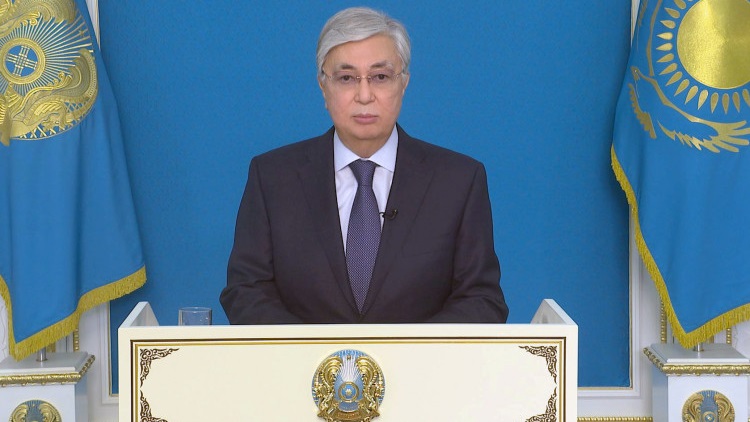Kazakhstan’s president Kassym-Jomart Tokayev asked the Collective Security Treaty Organization (CSTO) on Wednesday, January 5 for military help to deal with the violent protests ongoing since last weekend in the country. He alleged that the aim of the protesters is “undermining the territorial integrity.” The CSTO has agreed to deploy peacekeeping forces for a limited period in Kazakhstan as per the request made by Tokayev, Armenian president Nikol Pashinyan said in a Facebook post on Wednesday.
The move to call in CSTO forces comes after protests continued on Wednesday despite the president ordering the reinstatement of price controls on Liquefied Petroleum Gas (LPG) and sacking the government. These were the two major demands raised by the protesters.
At several places, protesters tried to violently barge into government buildings. According to Tokayev, on Wednesday a firefight broke out between the “terrorists” and air force in Almaty, the country’s largest city and center of the protests.
The CSTO, formed in 2002, is a regional collective security group of six former Soviet Union republics –Russia, Kazakhstan, Belarus, Armenia, Kyrgyzstan and Tajikistan.
Late on Tuesday, Tokayev accepted the resignation of prime minister Askar Mamin. President Tokayev asked deputy prime minister Alikhan Smailov to serve as interim prime minister until a new government takes over. On Tuesday, Tokayev also announced the imposition of emergency and a curfew in Almaty. He also invited the protesters for dialogue.
During the protests, there were instances of public rioting and destruction of public property. Several videos on social media show protesters burning cars and damaging public property. Security forces responded with tear gas, stun grenades and flashbag grenades.
Even US government mouthpiece the NY Times, which is staunchly supporting the protests in Kazakhstan, admits they are very violent.
Rioters are burning government buildings and police cars. At least 8 police officers have already been killed.
They're not "Peaceful Protests"™ pic.twitter.com/FFs1ngoafx
— Benjamin Norton (@BenjaminNorton) January 6, 2022
Protests give rise to speculation
Both the timing and the nature of the protests have raised doubts on its direction given the geo-political crisis in the region. Some commentators have tried to link the protests with the ongoing confrontation between Russia and the western powers over Ukraine. Though the US has denied its involvement, saying that “unnamed Russians” have falsely accused it of triggering the unrest, its history gives room for doubt. There have been comparisons to similar protests in Belarus last year where the opposition leaders were accused of collaborating with Europeans and the US.
Kazakhstan is one of the largest producers of oil and gas in the world. Its government, claiming that the production of gas is unprofitable and unsustainable at current prices, had allowed the industry to gradually sell its products in the open market from 2019 as part of ending its long-term policy of price control. On January 1, the companies were allowed to sell 100% of their products in the open market.
Following the lifting of price controls, the LPG prices nearly doubled from around USD 0.12 to USD 0.23-28. Since LPG is the preferred source of energy in the country, it was mainly the working people who were affected.
The first protests were recorded during the weekend in the country’s western Mangystau region which is also its main oil and gas hub. A large number of workers in the oil industry also reportedly joined the protests.
Responding to the protests, Tokayev had announced on Tuesday the reinstatement of price controls and a 50% roll back in the prices of LPG in the Mangystau region. He also appealed to the protesters to be responsible and not listen to forces “interested in undermining the stability and unity of our society.”





